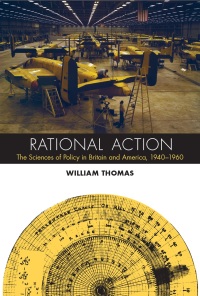Hobbit History: A Case Study March 7, 2008
Posted by Will Thomas in Uncategorized.Tags: C. S. Lewis, Hobbit History, Michel Foucault, Richard Burkhardt
trackback
Fair warning: long post.
Reading over C. S. Lewis’ The Discarded Image, the following passage popped out at me about his opinion of the relationship between medieval literature and medieval conceptions about the historical-philosophical Model of the universe that they had. Seeking to explain “why the authors so gladly present knowledge which most of their audience must have possessed,” he observes: “One gets the impression that medieval people, like Professor Tolkien’s Hobbits, enjoyed books which told them what they already knew.” He tries on a number of theories as to why this might be, but concludes: “The simplest explanation is, I believe, the true one. Poets and other artists depicted these things because their minds loved to dwell on them. Other ages have not had a Model so universally accepted as theirs, so imaginable, and so satisfying to the imagination.”
I think we have a Historical Model about science and context that maybe we just kind of like to remind ourselves about again and again through case study. I will present the case for the prosecution against the 2006 HSS Distinguished Lecture, “The Leopard in the Garden: Life in Close Quarters at the Museum d’Histoire Naturelle” by Richard Burkhardt of Urbana–Champaign, as appearing in the December Isis. The lecture is sort of a behind-the-scenes look at the history of the governance of the museum in the late-18th, early 19th century, especially under George Cuvier. I have nothing against the piece, as such. It’s charming and well written. But I would also claim there’s absolutely no reason to read it because we already know roughly what it says.
We get to the main claim to importance here: “From a somewhat more nuanced perspective [beware the word “nuance” because it will usually alert you to the presence of a nearby “naive position”], we might also think about the power the museum exercised over its scientists. Perhaps by the nature of its resources and practices, it disposed its scientists to think and act in certain ways but not others. Pursuing the phrase in a Foucauldian direction [novel claims are sure to come], we could consider how the museum’s structures and practices served to discipline the French populace, ordering their behavior and fixing their place in the social order.”
This last bit might be sort of interesting, if the significance of the museum could be demonstrated, but the “French populace” never actually appears, nor does the museum directors’ assessment of their impact on the populace. We are largely left to infer the relationship between the museum and the French populace, by the actions of the museum directors and our innate (edit: “enlightened”?) understanding of museums as loci of knowledge/power. He seems to make the connection primarily in the museum’s ability to control the specimens, but, as I say, the effects of this control in the minds of the populace is not dealt with.
Anyway, hijinks ensue for 18 pages until we get to the moral of our story: “In our daily lives, as well as in our historical researches, we are continually reminded of the ways in which the cultivation of scientific knowledge and its dissemination are tied to specific times, places, and interests.” Say it with me, everyone: science is not context-independent.
Yes, it was a wild ride. Agendas were not only politically negotiated, they were also constrained by their material circumstance in ways pretty well consistent with our extant knowledge of the social relations of 19th century natural history. The acceptance of “progressive” scientific theories was resisted by those in positions of political power. Heck, the Hottentot Venus even dropped by for a visit, as much of an opportunity for bourgeois Europeans to project their notions of the exoticness of other races onto her body as ever.
I did learn that the Paris museum did not push Lamarckism, and that in the period of Darwin, it fell back on Lamarckism as a conservative position, so that adds a data point to my understanding of natural history presentation in that era–but that could have been demonstrated in a few sentences. Further, the historical significance of this data point is not clear.
Now, this is a distinguished lecture, which means that it is an opportunity to please an audience tired after a long day of hearing talks, and what better way than by presenting a pleasant story demonstrating unchallenging themes with which we ought to be familiar. So, the piece may say something about history of science audiences, but I would claim that it is actually quite representative of history of science writing regardless of audience, in that demonstration of the influence of social context on scientific knowledge is the key to receiving a polite response; nothing further is required; nothing further will receive particular reward.
Had I been in Vancouver, I’d have probably skipped out to get a beer with my colleagues. Tell me something surprising, and you’ve got my attention. Your honor, the prosecution rests.
Coming soon: Why Philip Mirowski is a mad genius; and Jenny and Will invite some folks over for a debate on French versus Anglophone analytical traditions (if I understand her proposal right). Also, I’d at some point like to take a look at Ronald Binzley’s intriguing case for mid-20th century Catholic science in the same issue of Isis as Burkhardt’s piece.

Comments»
No comments yet — be the first.